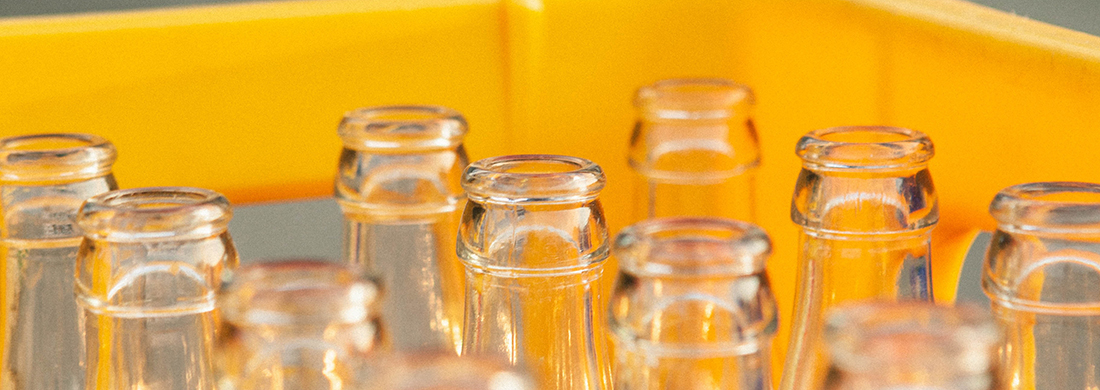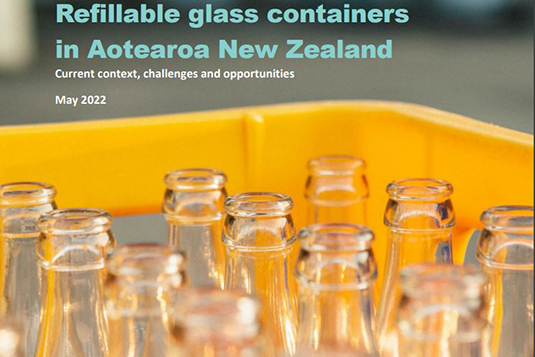
Refillables – what could the future hold?
The GPF recently published a report on what’s happening in New Zealand with refillable containers and what the future may bring.
While it’s not a new idea, refillables make up a proportionally tiny part of the current beverage market. However, there is a growing desire among consumers for the option while businesses are increasingly exploring refillables as a way of making their products more sustainable.
Growing number of refillable shcemes
The Associated Bottlers Co’s Swappa Crate is the best example of a successful, national refill scheme in New Zealand, having run for over 100 years. While it has greatly receded since its peak in 1975, it’s had a recent surge over the past few years, and in 2020 saw the equivalent of 11 million 330ml bottles refilled.
There is also an increasing number of more localised examples such as milk producers and breweries offering ‘fill-your-own’, bottle swap or delivered refill options. Two examples on a larger scale are Synlait and Lewis Road Creamery which offer refill options through a few supermarkets and grocery stores in Christchurch and Auckland.
There are over 20 milk refill schemes in NZ, although compared with Swappa Crate’s 30 million units, they make up a very small percentage of the refillables market. Refills at various small/craft breweries, tap rooms, liquor stores and distilleries also make up a very small portion of the market.
Coffee, soft drinks, food and even cosmetics and oral care container refill options have also recently appeared.
While the sum total of refillable options in NZ currently has a small impact on waste reduction they are important in creating behaviour change among consumers where single use rules supreme. They also offer insights into how to scale refillable schemes in NZ.
Challenges
Travel distance is the biggest hurdle in making refillables truly sustainable. Travel too far and the carbon footprint will become too great as well as increase the risk of damaging the containers. In NZ our main bottling plants are centralised in Auckland so creating localised hubs is vital.
Capital investment is another obstacle. The equipment needed to scale a refill scheme is often too expensive, particularly for smaller businesses.
Standardisation is the third major piece of the puzzle, with standardised containers being essential for streamlining a refill scheme. Other challenges include the focus on export markets, labelling and washing non-beverage containers with oily contents.
Opportunities
While packaging design is often seen as a unique branding opportunity, there is potential for industry collaboration and standardisation to enhance the environmental reputation of brands as this grows in importance to their target markets.
There are also opportunities in subscription swap and fill-your-own models. Subscription services for meal kits are a growing segment and the same model could also work for a swap system for beverages.
The fill-your-own model is the simplest and lowest cost option. While it accounts for a fraction of the current refillables market there is potential for it having an impact through the 218 breweries in NZ. In fact, as of 2019, NZ had a higher brewery per capita ratio than the UK, Australia and US.
Breweries in geographically isolated areas can provide a refill option where a bottle swap service may not be viable.
Refill schemes have their roots in decades-old technology, but modern enhancements can provide improvements such as cleaning containers more efficiently, and tracking technology to manage container collection effectively.
The GPF’s role
We are committed to enabling viable refillable schemes in NZ and believe we are a vital part of all conversations with NZ related to the reuse of glass containers.
We also acknowledge the vital role data plays in making decisions and would like to see a full lifecycle analysis done looking all environmental impacts of reusable and single-trip glass in a New Zealand-specific context.
The GPF is also uniquely positioned and skilled to act as a product stewardship organisation, or scheme manager for industry refill schemes.
Read the full report
Apply for funding through one of our funding rounds



